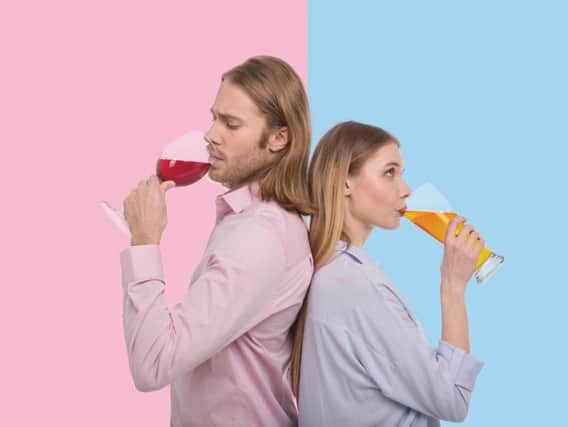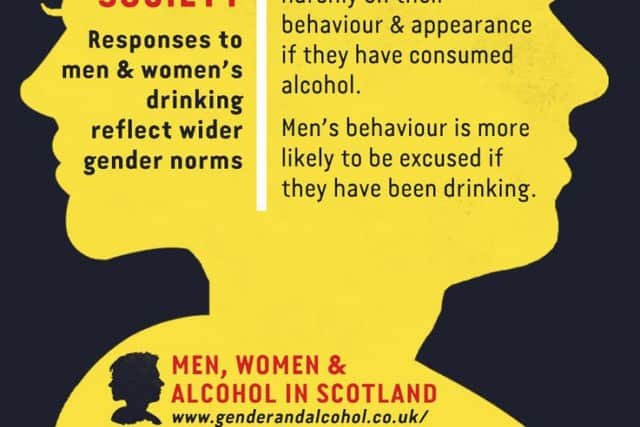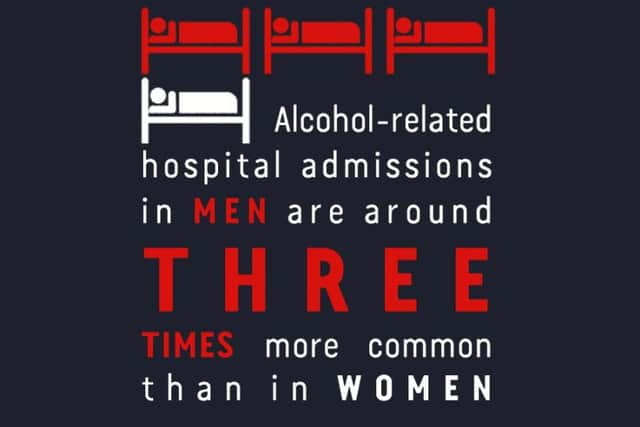Report shows clear gender bias in the way drinking is reported on


Policy makers are being urged to see beyond biased marketing and media messages that unfairly portray women’s relationships with alcohol. Glasgow-based research into how the media reports binge drinking revealed female drinkers are often depicted in a more negative fashion than men.
In particular they found one image of a young woman lying on a street bench with empty bottles by her side was repeatedly used to illustrate the problem of binge drinking, while others portrayed women in undignified and “unfeminine” situations, partially dressed or apparently out of control.
In contrast, male drinking is often depicted in images which show friends enjoying sporting events or relaxing together.


It raises concerns that over-indulgence may be seen by some as a greater issue for women than men when, in fact, male drinkers are three times more likely to be hospitalised as a result of alcohol than women.
There are also concerns that the negative media images and language create a stigma around female drinking which could prevent some women from seeking support and advice.
Now policy makers are being urged to see beyond the gender stereotypes to ensure alcohol-related strategies and services are not influenced by unfair media stereotypes.
The research into how male and female drinking is portrayed was carried out by Glasgow Caledonian University (GCU) and the University of Glasgow.


Co-author Dr Carol Emslie will use it as the basis of a presentation to European alcohol specialists at a major conference, when issues concerning gender and alcohol will be among key topics being discussed.
The Enlightened Alcohol Policy for the 21st Century conference, which takes place at the Royal College of Physicians of Edinburgh in November, will see 300 delegates gather for two days of discussion across a range of modern alcohol-related issues.
Emslie, lead of the substance use and misuse research group in the School of Health and Life Sciences at GCU, said the use of negative images of women to portray binge drinking created an impression that drinking among women is a greater problem than among men.
“It adds to the double standards surrounding women’s behaviour compared to men’s and feeds into the suggestion that victims of sexual assault or harassment are responsible because they have been drinking,” she said.
“We also need to ensure that gender is considered when politicians are developing alcohol strategies and to look at whether policies – such as minimum unit pricing – have a similar impact on men as they have on women.”
Emslie added that alcohol advertising aimed at women often shows alcohol products as sophisticated and stylish, while marketing aimed at male consumers tends to be linked to sport and healthy activities. Despite the aspirational portrayal of alcohol in the media and in advertising, latest figures from National Records Scotland showed there were 1,265 alcohol-related deaths in 2016, an increase of 10 per cent on the previous year.
In addition, alcohol-related deaths in men are double that of women in Scotland – 867 men compared to 398 women in 2016.
Scottish male drinkers also consume on average 17 units per week compared to nine units per week for female drinkers.
The impact of alcohol in relation to gender is one of six key areas to come under the spotlight at the November conference, which is organised by SHAAP (Scottish Health Action on Alcohol Problems) and Eurocare (the European Alcohol Policy Alliance) and supported by the Scottish Government.
It is expected to result in calls for international collaboration to tackle a range of issues, including health, justice, gender, economy, youth and recovery.
The 8th European Alcohol Policy Conference will take place at the Royal College of Physicians in Edinburgh on 20 and 21 November. To book a place, visit www.8eapc.eu